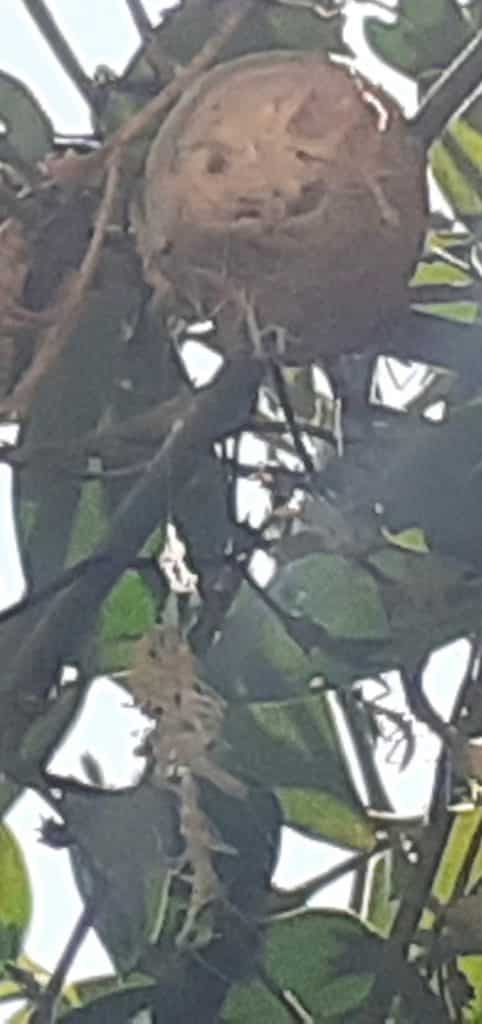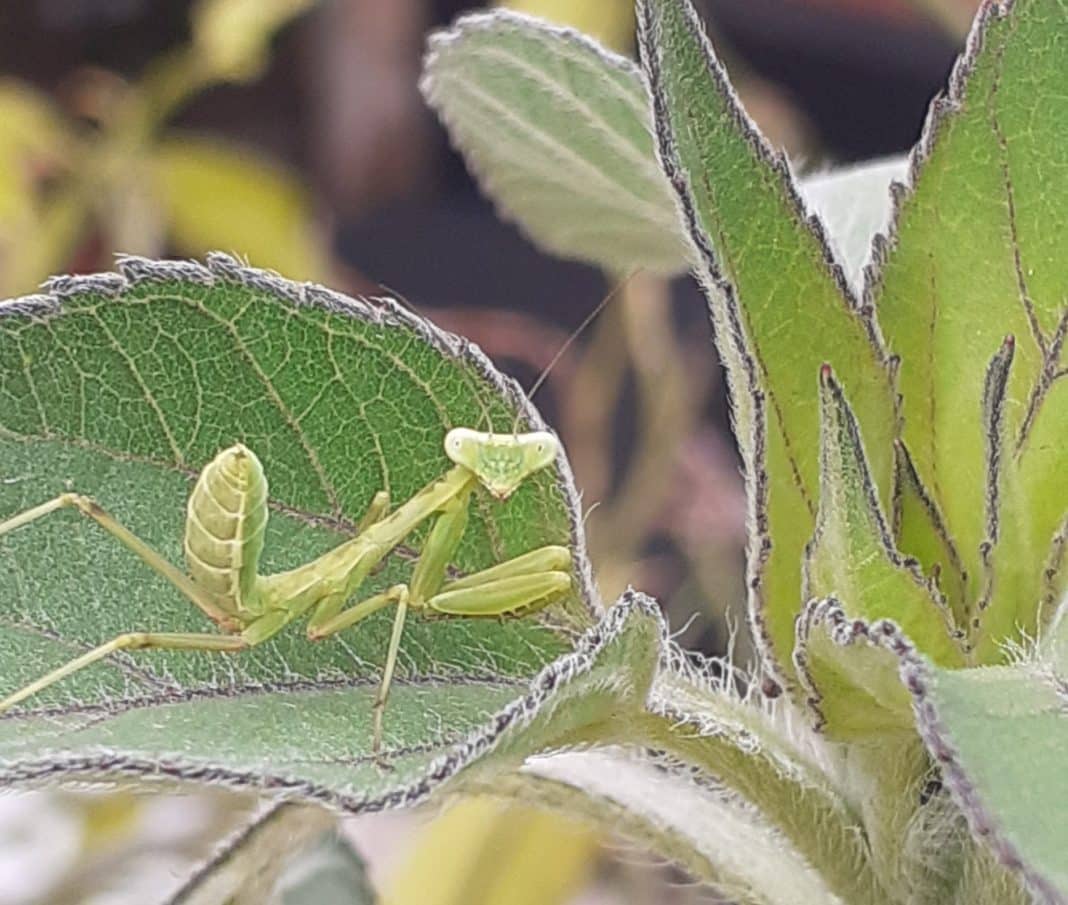By Andrew Atkinson
Praying mantis nymphs are appearing this month in the gardens from their ootheca – egg sacks.
The eggs of a female mantis are enclosed in a foamy pouch – ootheca – which is soft, but quickly dries to become a firm and tough shell, protecting the nymphs until they hatch.
A praying mantis produced five ootheca sacks last year in our garden in Los Montesinos which can hold between 30 to 300 nymphs in foamy liquids.
The European mantis is a large hemimetabolic insect in the family of the Mantidae, the largest family of the order Mantodea – the common name praying mantis – derived from the distinctive posture of the first pair of legs, observed in animals in repose.

Both males and females have elongated bodies, with two pairs of wings. The most striking features that all Mantodea share are a very mobile, triangular head with large compound eyes and their first pair of legs – raptorial – which is highly modified for the efficient capture and restraint of fast-moving or flying prey.
Sexually mature males approach sexually mature females when they see them, but due to the physical superiority of the females, males face certain challenges in doing so. When a female spots a male, she is very likely to attack and kill him – sexual cannibalism.
Therefore, males can be observed to be very slow and cautious in their approach; after spotting a female, the male usually freezes and turns his head to look directly at her.
Since the foveae in his eyes face directly forwards, he has the most accurate and detailed view of her and can watch every one of her moves.
Males can be observed to stop, as soon as the female turns her head, or even moves. Mantids are very good at detecting moving structures, depending on the environment, males sometimes show a light ‘rocking’ behaviour, believed to imitate the leaves of surrounding plants, to blend in with the background.
Praying mantis lifespan varies, with an average lifespan of a year. The average age for most adult species is six months.






